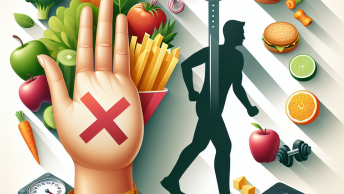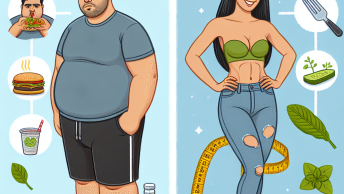When it comes to losing fat effectively, your meal plan plays a crucial role in achieving your goals. A well-structured fat loss meal plan not only fuels your body with the right nutrients but also keeps you feeling satisfied. In this article, we’ll explore ten essential elements for crafting a successful fat loss meal plan that can help you shed those extra pounds without sacrificing your well-being.
1. Set Clear Goals
Before diving into meal planning, it is vital to establish clear, achievable goals. Ask yourself: How much weight do you want to lose? Over what time frame? Having specific targets can help you stay focused and motivated. Consider using a weight loss calculator or consulting with a nutritionist to tailor your goals realistically.
2. Understand Your Caloric Needs
To lose fat, you must be in a caloric deficit, meaning you consume fewer calories than you burn. Understanding your Basal Metabolic Rate (BMR) and Total Daily Energy Expenditure (TDEE) is crucial. Tools and apps are available that can help you calculate your daily caloric needs based on your age, weight, height, and activity level.
3. Prioritize Whole Foods
Opt for whole, nutrient-dense foods over processed items. Whole foods contain essential vitamins, minerals, and fiber that are often stripped away during processing. Incorporate plenty of fruits, vegetables, lean proteins, whole grains, and healthy fats into your meals. Not only will these foods support fat loss, but they also help maintain your overall health.
4. Plan Your Meals Ahead of Time
Meal planning is a powerful tool for fat loss. Spend a few hours each week to plan your meals, prep ingredients, and batch-cook. This practice reduces the temptation to eat unhealthy foods due to convenience. Having healthy meals readily available can lead you to make better choices, ultimately supporting your weight loss goals.
5. Incorporate Lean Proteins
Protein is essential for muscle maintenance, especially when losing fat. It helps you stay satiated and reduces hunger pangs. Focus on incorporating lean protein sources such as chicken, turkey, fish, beans, legumes, and low-fat dairy products into your diet. Proteins also promote muscle recovery after workouts, preserving your lean body mass during fat loss.
6. Don’t Skip the Fats
Healthy fats should not be neglected in a fat loss meal plan. They are crucial for hormone regulation and can aid in keeping you feeling full. Incorporate sources of healthy fats like avocados, nuts, seeds, olive oil, and fatty fish into your meals. Remember, moderation is key, as fats are calorie-dense.
7. Keep Track of Your Meals
Tracking what you eat can provide valuable insights and keep you accountable. Use meal tracking apps or keep a food journal to log your daily intake. This awareness can help identify patterns, allowing you to make necessary adjustments to your meal plan. Over time, you’ll have a better understanding of foods that work best for you on your fat loss journey.
8. Stay Hydrated
Hydration plays an often-overlooked role in fat loss. Drinking enough water aids in digestion, helps control hunger, and can boost your metabolism. Aim for at least eight glasses of water a day or more based on your activity level. Sometimes, thirst is mistaken for hunger; staying hydrated can reduce unnecessary snacking.
9. Practice Mindful Eating
Mindful eating encourages awareness of your eating habits. Slow down and pay attention to the flavors, textures, and aromas of your food. This practice can help prevent overeating and promote a healthier relationship with food. By listening to your body’s hunger and fullness cues, you enhance your overall meal experience.
10. Educate Yourself with Resources
Lastly, investing time in understanding nutrition can transform your fat loss journey. If you’re looking for a comprehensive guide that consolidates all of these principles, you might find helpful tools online. For those interested in structured meal plans and learning more, Click Here to learn more.
Conclusion
Creating a fat loss meal plan doesn’t have to be overwhelming. By setting clear goals, understanding your caloric needs, and focusing on whole foods, you can design a sustainable eating strategy that promotes fat loss while ensuring you have the energy to thrive. Remember to stay hydrated, track your meals, and educate yourself along the way. A successful fat loss journey balances lifestyle changes with enjoyable, nutrient-rich meals. With patience and determination, you will achieve your weight loss goals and maintain a healthier lifestyle.






